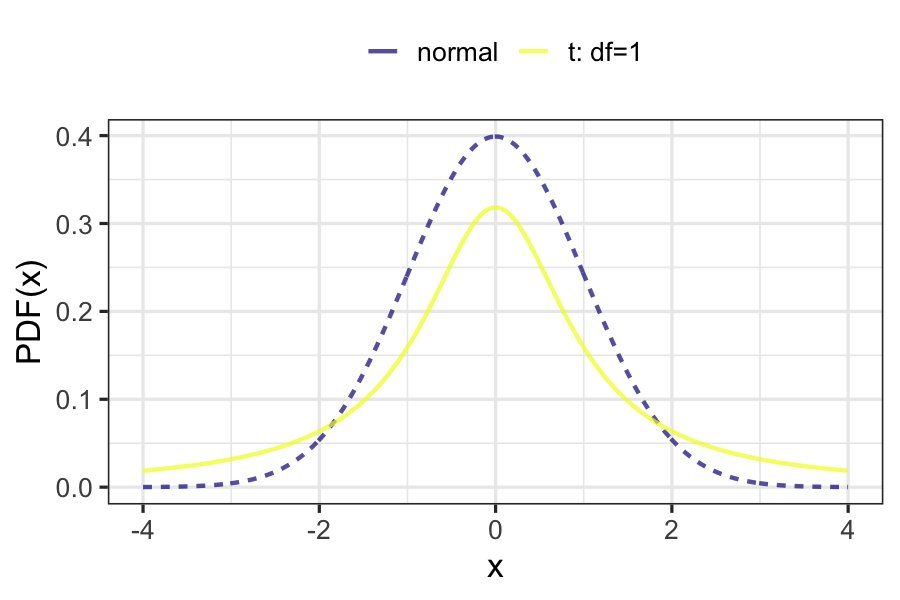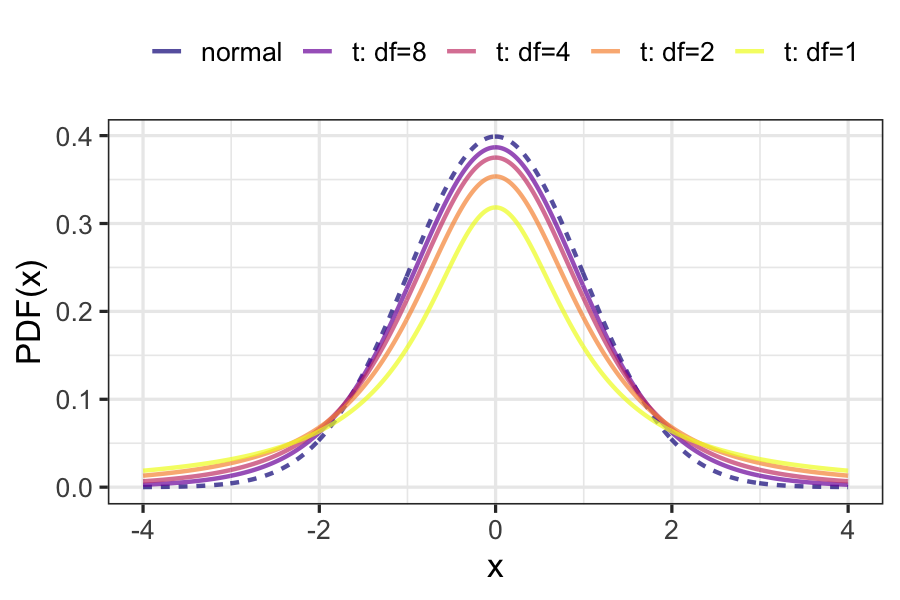Calculating p-values from t-statistics
Hypothesis Testing in Python

James Chapman
Curriculum Manager, DataCamp
t-distributions
- t statistic follows a t-distribution
- Have a parameter named degrees of freedom, or df
- Look like normal distributions, with fatter tails

Degrees of freedom
- Larger degrees of freedom $\rightarrow$ t-distribution gets closer to the normal distribution
- Normal distribution $\rightarrow$ t-distribution with infinite df
- Degrees of freedom: maximum number of logically independent values in the data sample

Calculating degrees of freedom
- Dataset has 5 independent observations
- Four of the values are 2, 6, 8, and 5
- The sample mean is 5
- The last value must be 4
- Here, there are 4 degrees of freedom
- $df = n_{child} + n_{adult} - 2$
Hypotheses
$H_{0}$: The mean compensation (in USD) is the same for those that coded first as a child and those that coded first as an adult
$H_{A}$: The mean compensation (in USD) is greater for those that coded first as a child compared to those that coded first as an adult
Use a right-tailed test
Significance level
$\alpha = 0.1$
If $p \le \alpha$ then reject $H_{0}$.
Calculating p-values: one proportion vs. a value
from scipy.stats import norm
1 - norm.cdf(z_score)
$SE(\bar{x}_{\text{child}} - \bar{x}_{\text{adult}}) \approx \sqrt{\dfrac{s_{\text{child}}^2}{n_{\text{child}}} + \dfrac{s_{\text{adult}}^2}{n_{\text{adult}}}}$
z-statistic: needed when using one sample statistic to estimate a population parameter
t-statistic: needed when using multiple sample statistics to estimate a population parameter
Calculating p-values: two means from different groups
numerator = xbar_child - xbar_adult
denominator = np.sqrt(s_child ** 2 / n_child + s_adult ** 2 / n_adult)
t_stat = numerator / denominator
1.8699313316221844
degrees_of_freedom = n_child + n_adult - 2
2259
Calculating p-values: two means from different groups
- Use t-distribution CDF not normal CDF
from scipy.stats import t
1 - t.cdf(t_stat, df=degrees_of_freedom)
0.030811302165157595
- Evidence that Stack Overflow data scientists who started coding as a child earn more.
Let's practice!
Hypothesis Testing in Python

